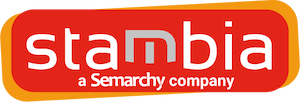 Stambia
The solution to all your data integrations needs
Stambia
The solution to all your data integrations needs

Stambia for Data Hub
Discover how the Data Hub architecture allows you to centralize and distribute your data. In a simple and effective way:
- Gain reactivity to make your information system evolve,
- Provide flexibility by supporting different types of exchanges: batch, streaming, real-time.
Thanks to its unified solution and scalable technology, Stambia allows you to accelerate and industrialize the construction of a reliable architecture for exchanges between your applications in half-flow mode, called Data Hub.

Stambia at the center of data exchange in a Data Hub architecture
Key points of a Data Hub architecture
Centralize reference data and transactions

Depending on the construction and evolution of the information system, the data can be duplicated in various applications. Storage needs are rapidly increasing, and difficulties appear to be encountered in conducting impact studies, maintaining flows and replicating data-related changes.
To meet these challenges, the Data Hub architecture centralizes reference and transactional data. The collected data can easily be distributed and include a subscription system (publish and subscribe).
Thus, the implementation of a Data Hub architecture is a facilitator for:
- Consolidating and streamlining the most commonly used data into a central point
- Establishing an effective data control system to improve data quality
- Ensuring traceability on flows and offering statistical monitoring of the company's activity
- Improving knowledge of the exchanged data
- Gradually building the company data model
Support different types of exchange
Each data exchange may require a different granularity and frequency.
The flexibility of a Data Hub architecture makes it possible to respond to multiple requests:
- Large volumes of data (batch mode)
- On the fly modifications (Asynchronous mode, ESB, Streaming)
- Real time (Webservices / API mode)
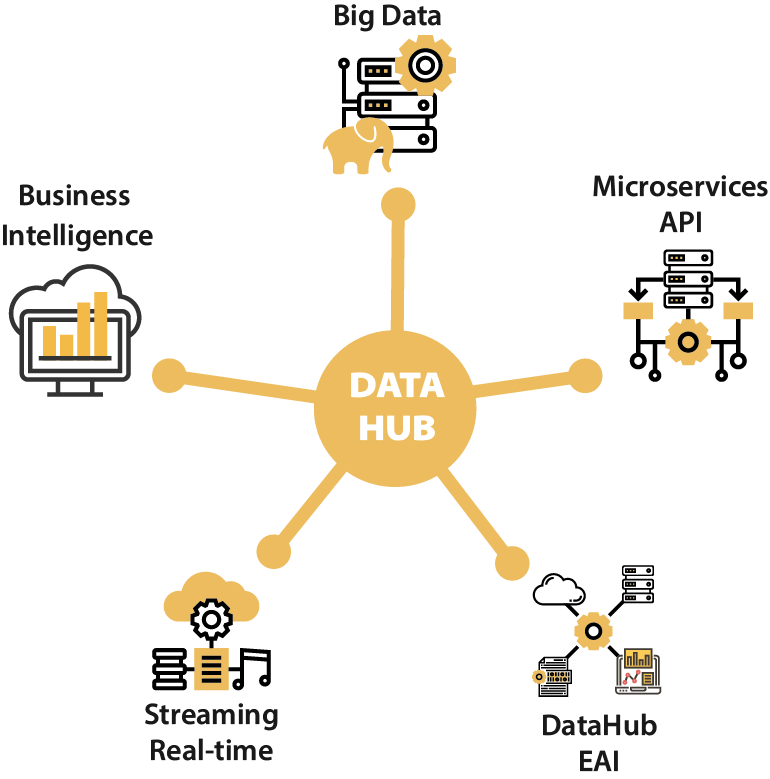
Make your Information System flexible

In the context of digital transformation, organizations face many challenges:
- Quickly support new business needs (especially in data)
- Plugging/unplugging applications (facilitate the plug'n'play mode of your IS)
- Open the information system to its ecosystem (partners, customers, applications, etc.)
Thanks to the half-flow principle, the Data Hub architecture makes it possible to support system evolutions and decompartmentalization. It contributes to a better consideration of an urbanization approach: mapping, flow documentation and data governance.
It allows you to be more responsive and agile when facing the challenges of business teams.
Establish an effective Data Quality system
Data quality is a key element for the success of the company's data projects. Indeed, decisions taken with low quality information can imply a significant cost (duplicates, imprecise or even incorrect information, etc.).
It is essential to facilitate the implementation of quality management and to be able to manage:
- Normalization and standardization of data according to business rules
- Rejections via rules of variable complexity
- Detection and removal of duplicates
- Monitoring of data quality evolution (via dashboards)
- …
In a Data Hub architecture, data is collected and distributed centrally. All the business rules applied are concentrated here. The propagation of changes is thus controlled and facilitated. As a result, this provides a global vision on data flows and enhanced visibility on impacted systems.
Data quality is essential to ensure a 360° customer view in a CRM project.
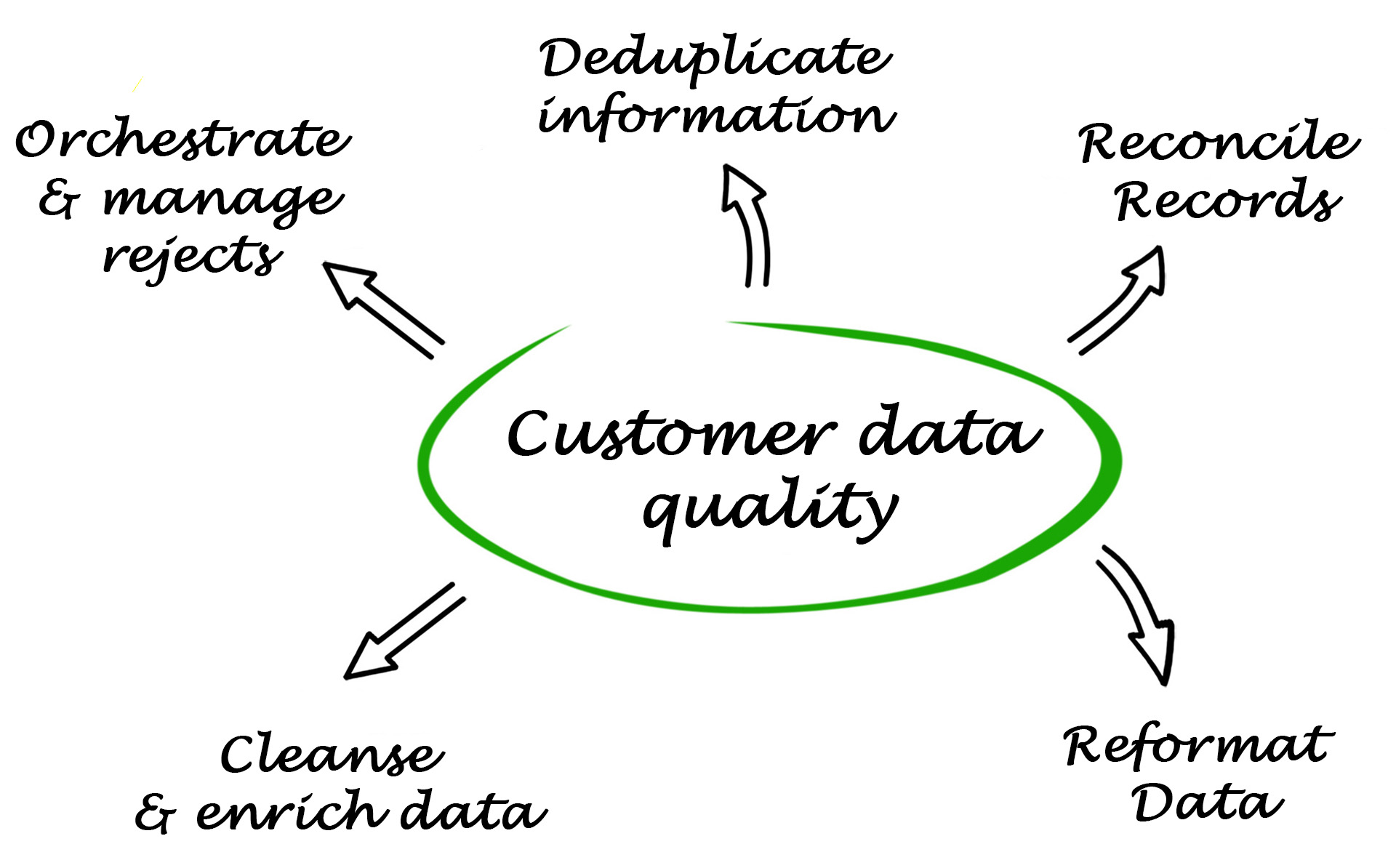
What is the Data Hub based on ?
An architecture based on a storage system
The Data Hub is an architecture based on a standard storage system, for example a relational database. To extend its capabilities, it can easily be combined with a Datalake system: archiving so-called unstructured data from social networks, capturing data generated by the IOT, etc.
The Data Hub helps to structure exchanges between application bricks, streamline usage and improve general knowledge around company data.
Create a shared and secure business data model
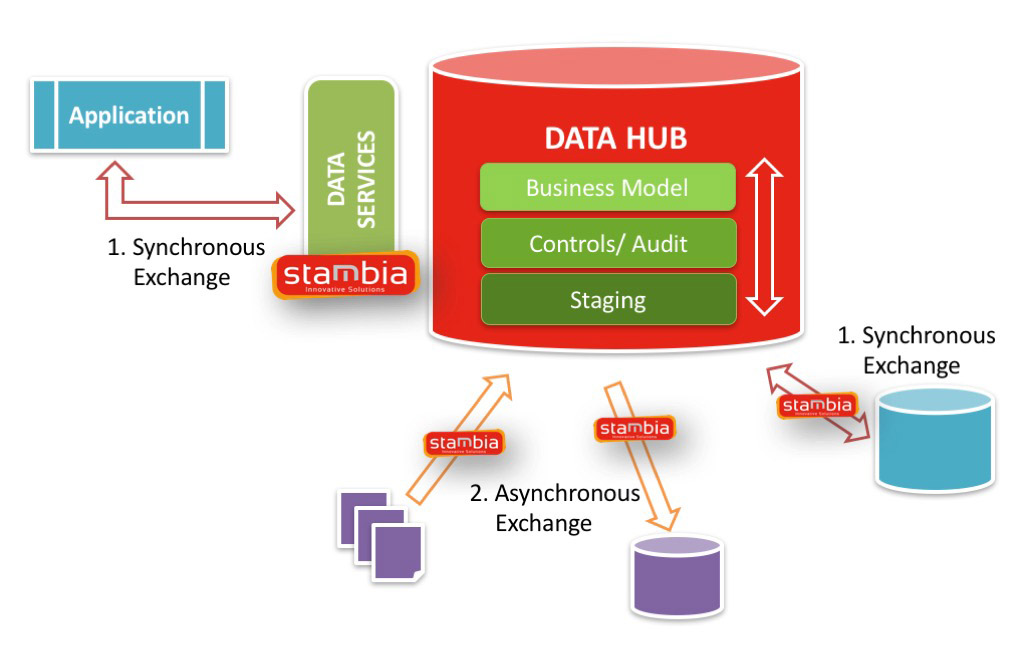
The Data Hub is an architecture that provides a business view of the company's data. The data model is centralized and can be easily shared.
The storage of transactions and reference data within the Data Hub facilitates the mechanisms:
- management of subscriptions on the data
- data historization
The organization becomes more agile when it comes to restoring data from the business model, implementing legal audits, or migrating data between applications.
The Data Hub contains control and traceability models to ensure data quality and audit. The implementation of rejection rules as well as centralized business rules guarantees the integrity of the business model.
Thanks to the half-flow principle, the decoupling of applications and systems is facilitated.
The Data Hub's urbanization concept makes it possible to shorten lead times and control the impact of any changes to the information system.
Rely on a reliable and high-performance architecture
The Data Hub is based on a storage system such as relational databases. It is an efficient and robust component controlled by IT teams.
Stambia's ELT architecture optimizes and enhances the Data Hub.
The coupling of this architecture with the Stambia solution allows:
- The provision of ready-to-use data
- Processing large volumes of data
- The implementation of high availability solutions
- Management of the depth of data historization
- Centralization of Webservices / APIs for data exposure
- …
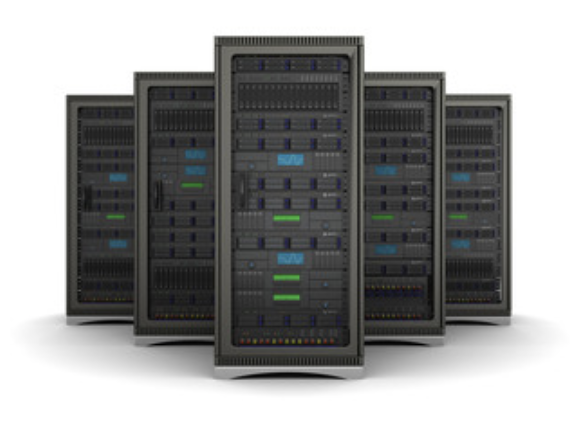
Benefit from a standard / universal query language
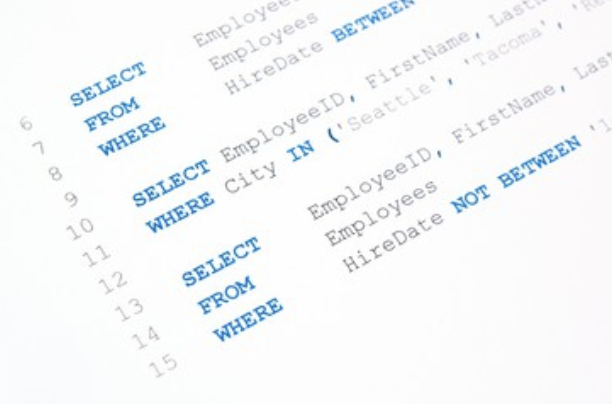
The storage system on which the Data Hub is based has a standard query language: for example SQL for a relational database. On other systems, there is often a SQL or similar compatibility layer. The structured query language (SQL) is similar to natural language. It allows you to perform many operations on models and data: search, add, modify, delete. It becomes very easy to set up a required business layer.
Naturally, through its data and business-oriented vision, the Data Hub facilitates interactions with business teams.
A unified and scalable Data Integration solution
How does Stambia accelerate the implementation of a Data Hub architecture ?
Due to its unified solution and scalable technology, Stambia makes it possible to accelerate and industrialize the construction of a reliable architecture for exchanges between applications in half-flow mode, called Data Hub. Ensure the success of your projects by breaking down the barriers between your information system and provide your business teams with readability.
Discover the benefits provided by Stambia to support the implementation of a Data Hub:
- Whatever the type of flow (batch, on the fly, real-time), a single mapping offers a unified vision and simplifies the readability of governance
- Operational Management & Monitoring Console (Production Analytics)
- A wide range of functionalities:
- Unlimited set of connectors to the IS: Salesforce, SAP, Databases, Cloud, Webservices / API, …
- Change Data Capture (CDC) function to capture data changes
- Ability to expose data, even complex processes through Webservices / APIs and micro services in 1 click
- Event management: folder scanning, tables, JMS / AMQP, queue / topic, emails, FTP, ...
- Operation in Transformation Delegation Mode (ELT)
- Accessibility and readability of the code generated and executed (no blackbox effect)
- Advanced DQM function:
- Automatic rejects management
- Application of customizable rules
- Monitoring dashboard
- Template system that automates technical operations
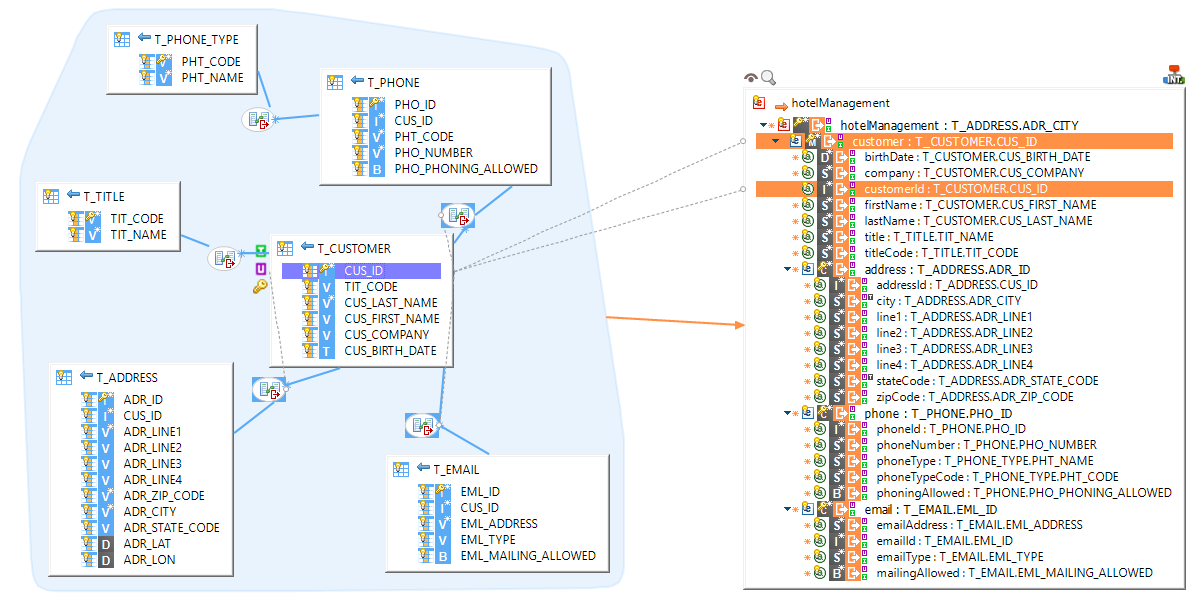
Summary
Here are the advantages of a Data Hub architecture coupled with the Stambia data integration tool:
- Support of data flows in synchronous and asynchronous mode
- Iterative and agile construction of the enterprise data model
- Data subscription management
- Persistence of transactions and reference data
- SQL Language as a reference for data management and audit
- Performance managed by databases
Want to know more ?
Consult our resources
Did not find what you want on this page?
Check out our other resources:
Semarchy has acquired Stambia
Stambia becomes Semarchy xDI Data Integration


